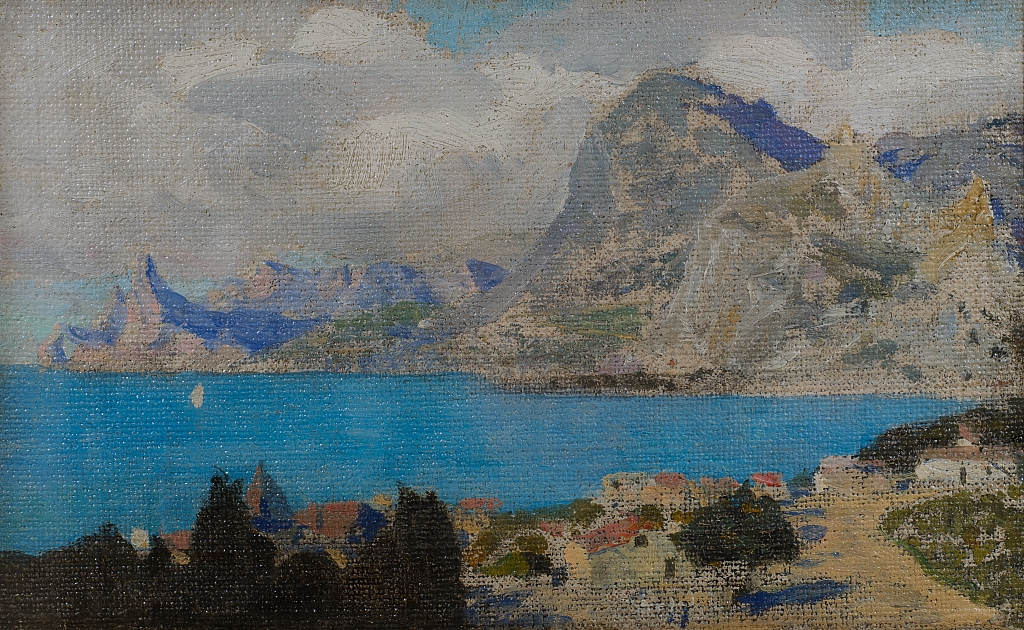
Crimea. Sudak. The bay and Mountain of Sokol. 1912
Vasily Polenov
Oil on canvas mounted on cardboard
13X21.5
Alexander Golovin, one of Polenov’s students, said: “His colour-range was so vivid, and that alone was enough to excite young artists.” Konstantin Korovin wrote about his favourite teacher, “Isaak Levitan and I could hardly wait to see Polenov at our school. All the students gathered for a life class. Finally there he was. Something in his face, his appearance, and his manners reminded me of Turgenev… He was dressed well, with a European style - as for me … Well, one simply couldn’t come to our School dressed in a crisp shirt or a tie, it was regarded as a violation of some special tradition.” In a word, the figure of Polenov was glorified, even worshipped by the new and young artistic generation. The colours in his paintings captured his contemporaries and seemed no less than an artistic revelation, while the pictorial vividness of his works burst out even more after the artist returned from his trips to Palestine, Egypt, and the Near East. That can be seen in the painting “Crimea. Sudak. The Bay and Mountain of Sokol.” One can observe the intensification of colour and its sharp contrasts. Igor Grabar described the phenomenon well in one of his letters to the artist, saying that there were three different artists in Polenov simultaneously: “a ‘medieval’ one, a ‘Moscow’ one, and a ‘Palestine’ one, or more generally, an Eastern one.”



